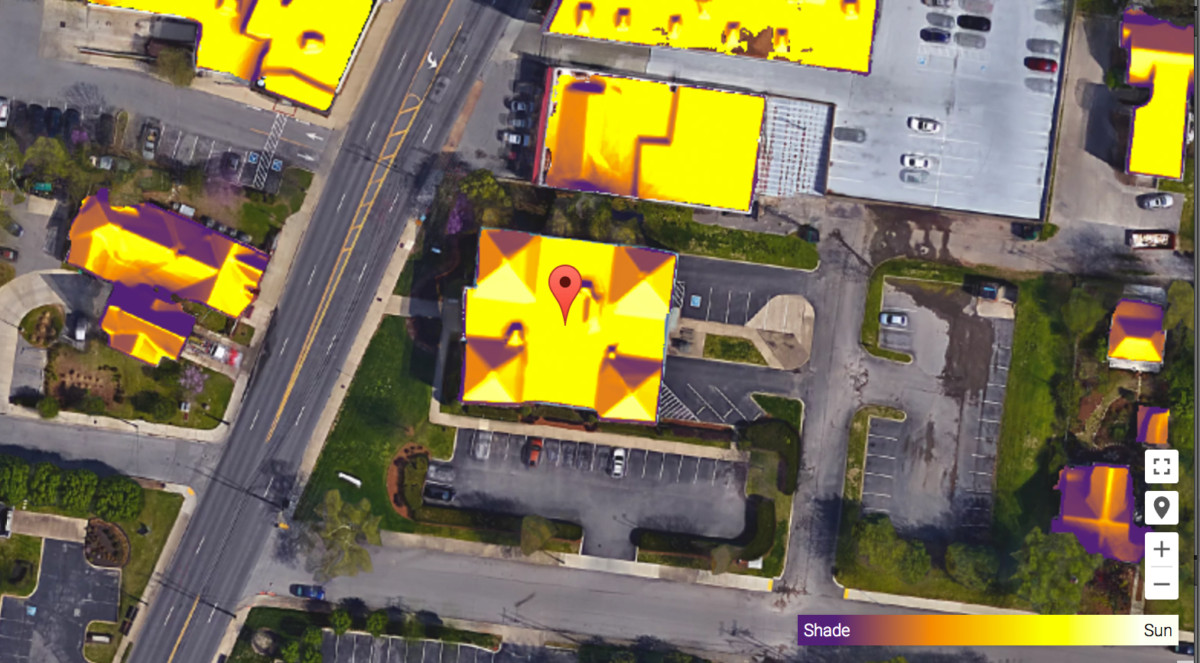Is solar energy a good option for your Nashville home?
While most homeowners in Nashville still get their power the old-fashioned way, by tapping the NES grid, it’s not a stretch to think that solar power might be a common power option here even a decade from now.
Here’s why that seems at least likely: In 2016, solar was the leading source of power going into our grids, at 39 percent, while Natural Gas was 29 and wind was 26. And even though solar growth slowed down, it still jumped 19 percent last year, according to figures from the Solar Energy Industries Association.
Meanwhile, installing solar power keeps getting less expensive — from 2008 to now, the per-watt cost dropped by over 60 percent (via U.S. Department of Energy figures).
As a homeowner or homebuyer (or real estate agent), it’s kind of interesting stuff to follow, even if you’re not in the market for renewable energy options right now.

How solar energy plays out in Nashville
We’re not exactly leading the solar pack here in Tennessee. In 2016, we were sitting at No. 25 on a list of 40 states ranked for solar installation growth. We’re on the upswing, at least, since we were No. 30 the year before. (For comparison’s sake, the country as a whole is getting solar-stacked. By 2016, there were 1.3 million solar installations across the U.S., and solar was producing enough electricity to power more than 8.3 million homes.)
Nashville’s actually in a pretty good place, sun-wise — Google’s Project Sunroof, designed to give people an easy way to explore their solar options, shows that 84 percent of Nashville’s roofs are viable for solar installation — about 173,000 roofs total. If those all went solar, we’d be cooking up about 4.3 million megawatt hours of power a year, and cutting out 3.3 million metric tons of Carbon dioxide (the equivalent of taking almost 700,000 cars off the road for a year).
Check your Nashville roof
Curious whether it’d make sense to explore solar panels on your Nashville home? You can search Project Sunroof by address, and get tailor-made data.
How it works: Using Google Earth imagery, Project Sunroof analyzes weather patterns, your roof’s shape and the way it’s situated, and gives you a basic analysis: how much usable sunlight you can expect, how much area you have for panels, how much solar installation would cost, and how much you could potentially save over 20 years.
As an experiment, we checked our Nashville office building in the Belmont/Hillsboro area. Project Sunroof says we have about 1600 hours of usable sunlight a year, and if we installed the recommended amount of solar coverage, we’d pocket more than $33,000 in energy savings over 20 years.
Does solar benefit a home’s value?
One thing I know you’re wondering: How would this play into the value of your home, if you decide to sell?
As with all things renovation-related, there are no guarantees, but studies are showing good data, at least. One from the U.S. Department of Energy’s Lawrence Berkeley Laboratory found, over the past handful of years, that homes with solar panels got a value boost of as much as $15,000.
That kind of stuff always differs state to state, city to city and home to home. But as we glide toward living in the future, it’s worth getting a look at how things are changing, and may change in the future.
Head to Google’s Project Sunroof page if you’d like to search your own home and see what the data says.
If you’re looking for a new home in the Nashville area — solar-powered or not — we’re here to help. Call or email Radius Residential Partners, and tell us about what you’re looking for.
Published on 2017-05-30 15:47:51

